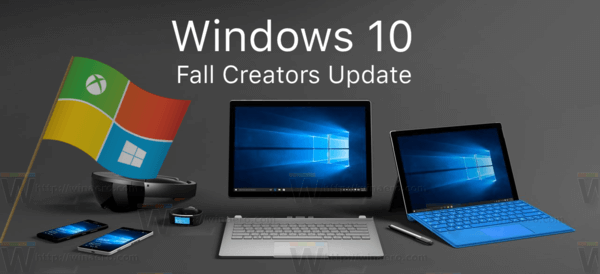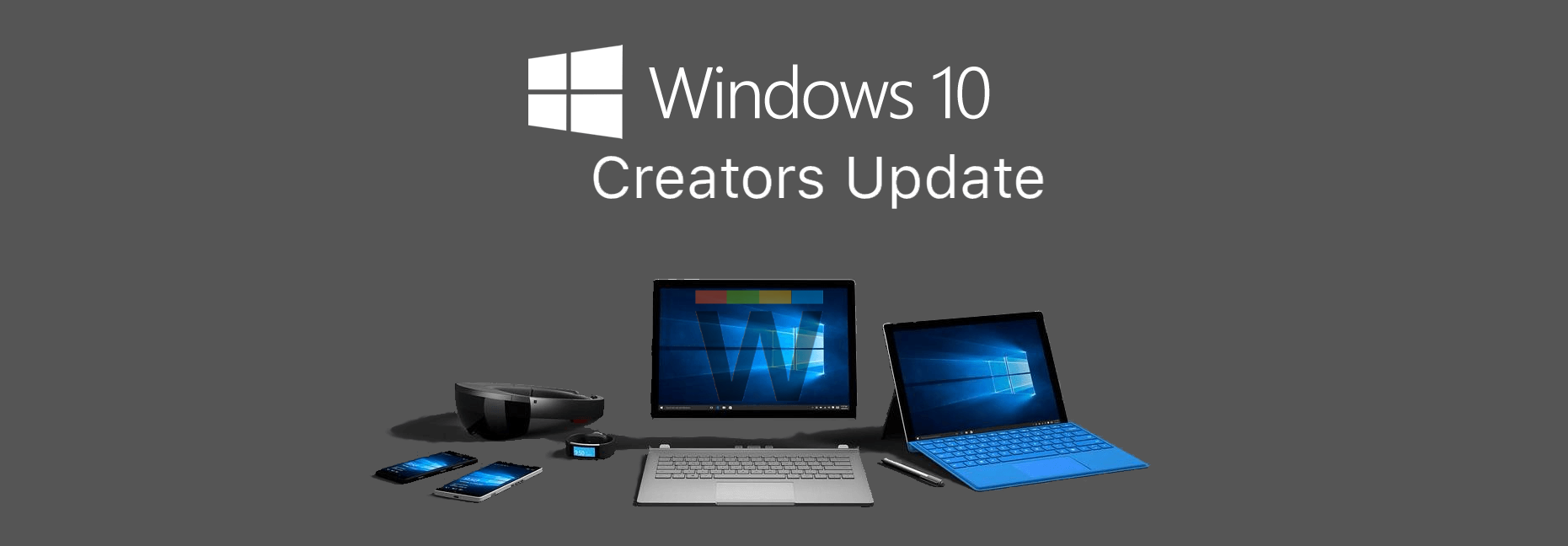Microsoft is releasing cumulative updates for a number of Windows 10 versions. Here is the change log for the updates.
Advertisеment
Windows 10 Fall Creators Update version 1709 KB4489890 (OS Build 16299.1059)
+
Windows 10 Anniversary Update version 1607, KB4489889 (OS Build 14393.2879)

- Addresses an issue with a Microsoft Access 97 database that stops a requested operation when a table or column has custom properties.
- Updates time zone information for Buenos Aires, Argentina.
- Addresses an issue with Microsoft Office Visual Basic for Applications that fails to use the Japanese Era registry settings for dates in the Japanese format. For more information, see KB4469068.
- Updates time zone information for Kazakhstan.
- Updates time zone information for São Tomé and Príncipe.
- Addresses an issue that prevents users from enabling gan-nen support for the Japanese Era. For more information, see KB4469068.
- Addresses an issue with the Group Policy, "Turn off app notifications on the lock screen".
- Addresses an issue that may prevent users from signing in and cause account lockouts when using the App-V client to start applications. The issue occurs because Kerberos authentication fails when trying to get user information from the domain name server (DNS). Modify the following registry key:
- Setting: UseDcForGetUserInfo
- Path: HKEY_LOCAL_MACHINE\SOFTWARE\Microsoft\AppV\Shared\
- Type: REG_DWORD
- Value: Setting the following DWORD to nonzero will enable the solution.
- Addresses an issue that prevents App-V applications from starting and generates error “0xc0000225”. Setting the following DWORD to a non-zero number will enable the solution: "HKLM\Software\Microsoft\AppV\\MAV\Configuration\MaxAttachWaitTimeInMilliseconds". The default is zero, the maximum is 10,000, and it limits the maximum wait time for a driver when the error occurs. For more information, see KB4494206.
- Addresses an issue that prevents the authentication credentials dialog from appearing when an enterprise web server attempts to connect to the Internet.
- Addresses an issue that causes a client or server to restart when using a smart card to log in with User Name Hints to an Azure Active Directory (AAD) joined machine using Remote Desktop Services.
- Addresses an issue with Microsoft Outlook profiles on devices that are domain joined and workplace joined. Creation of new Microsoft Outlook profile may fail, or created Microsoft Outlook profiles may fail to work later.
- Addresses an issue that removes the ALLOWCLSIDS policy from the policy XML file when you run the Add-SignerRule for Windows Defender Application Control.
- Addresses an issue that prevents a user from authenticating and causes Windows Account Manager (WAM) to fail when using a Trusted Platform Module (TPM).
- Addresses an issue that causes certificate renewal to fail when using CERT_RENEWAL_PROP_ID with the ICertPropertyRenewal interface.
- Adds a new Group Policy setting called “Enable Windows to soft-disconnect a computer from a network”. This determines how Windows will disconnect a computer from a network when it determines that the computer should no longer be connected to the network.
- If enabled, Windows will soft-disconnect (disconnection is not immediate or abrupt) a computer from a network.
- If disabled, Windows disconnects a computer from a network immediately.
- If not configured, the default behavior is soft-disconnect. For more information about soft-disconnect, see Understanding and configuring Windows Connection Manager.
Windows 10 Creators Update version 1703, KB4489888 (OS Build 15063.1716)

- Addresses an issue with a Microsoft Access 97 database that stops a requested operation when a table or column has custom properties.
- Updates time zone information for Buenos Aires, Argentina.
- Addresses an issue with Microsoft Office Visual Basic for Applications that fails to use the Japanese Era registry settings for dates in the Japanese format. For more information, see KB4469068.
- Updates time zone information for Kazakhstan.
- Updates time zone information for São Tomé and Príncipe.
- Addresses an issue that prevents users from enabling gan-nen support for the Japanese Era. For more information, see KB4469068.
- Addresses an issue that may prevent users from signing in and cause account lockouts when using the App-V client to start applications. The issue occurs because Kerberos authentication fails when trying to get user information from the domain name server (DNS). Modify the following registry key:
- Setting: UseDcForGetUserInfo
- Path: HKEY_LOCAL_MACHINE\SOFTWARE\Microsoft\AppV\Shared\
- Type: REG_DWORD
- Value: Setting the following DWORD to nonzero will enable the solution.
- Addresses an issue that prevents App-V applications from starting and generates error “0xc0000225”. Setting the following DWORD to a non-zero number will enable the solution: "HKLM\Software\Microsoft\AppV\\MAV\Configuration\MaxAttachWaitTimeInMilliseconds". The default is zero, the maximum is 10,000, and it limits the maximum wait time for a driver when the error occurs. For more information, see KB4494206.
- Addresses an issue that prevents the authentication credentials dialog from appearing when an enterprise web server attempts to connect to the Internet.
- Addresses an issue that causes a client or server to restart when using a smart card to log in with User Name Hints to an Azure Active Directory (AAD) joined machine using Remote Desktop Services.
- Addresses an issue that removes the ALLOWCLSIDS policy from the policy XML file when you run the Add-SignerRule for Windows Defender Application Control.
- Addresses an issue that prevents a user from authenticating and causes Windows Account Manager (WAM) to fail when using a Trusted Platform Module (TPM).
- Addresses an issue that causes certificate renewal to fail when using CERT_RENEWAL_PROP_ID with the ICertPropertyRenewal interface.
- Addresses an issue that may cause the error, “Stop 0x133” in NTFS.sys.
- Addresses an issue that prevents users from receiving all the available Windows updates using the Unified Write Filter (UWF) servicing mode while UWF is enabled.
- Addresses an issue in which the graphics device interface (GDI) DeleteObject() may cause the calling process to stop working when both of the following conditions are true:
- The calling process is a WOW64 process that handles memory addresses larger than 2 GB.
- The DeleteObject() is called with a device context that is compatible with a printer device context.
To get these updates, open Settings - > Update &recovery and click on the Check for Updates button on the right. Alternatively, you can get them from the Windows Update online catalog.
Support us
Winaero greatly relies on your support. You can help the site keep bringing you interesting and useful content and software by using these options:
